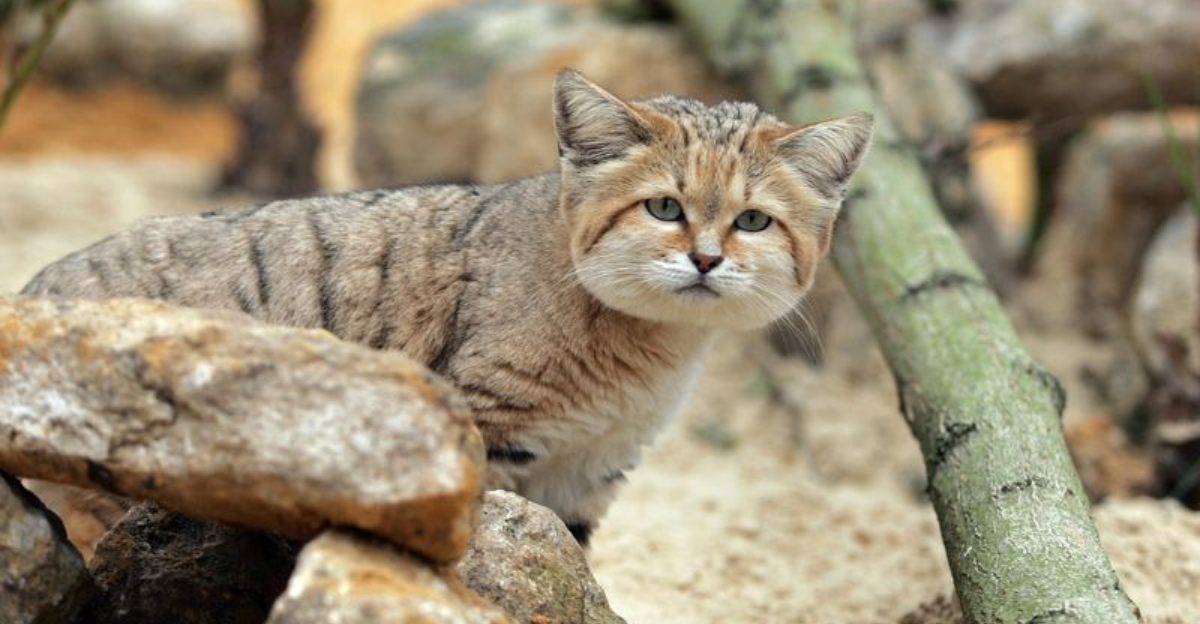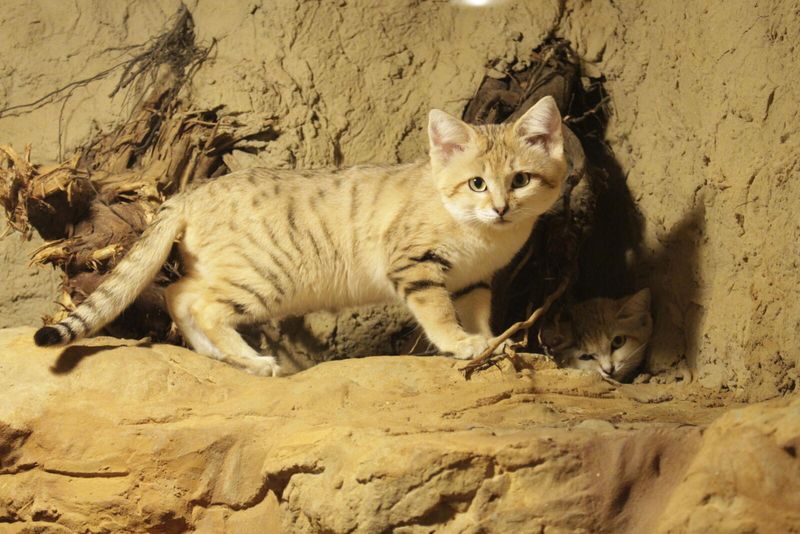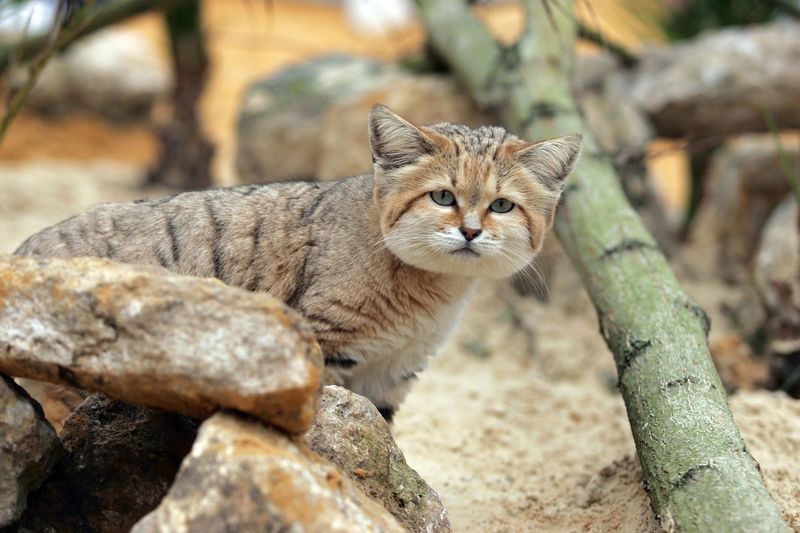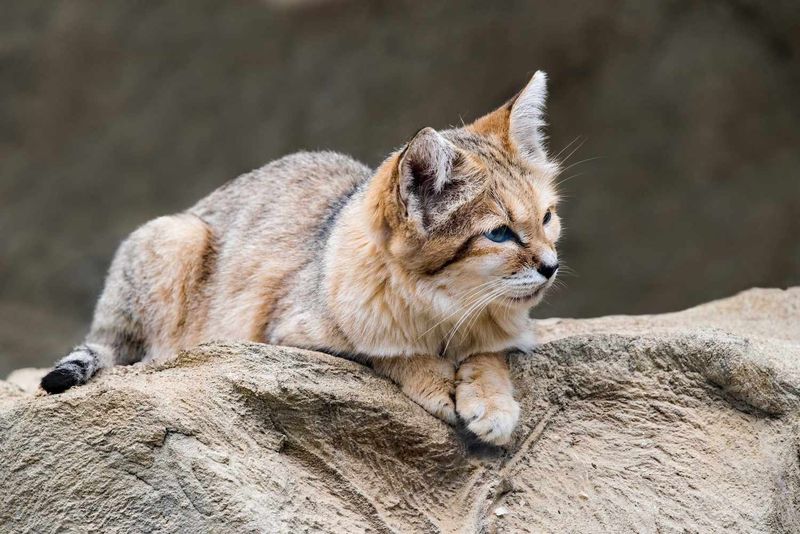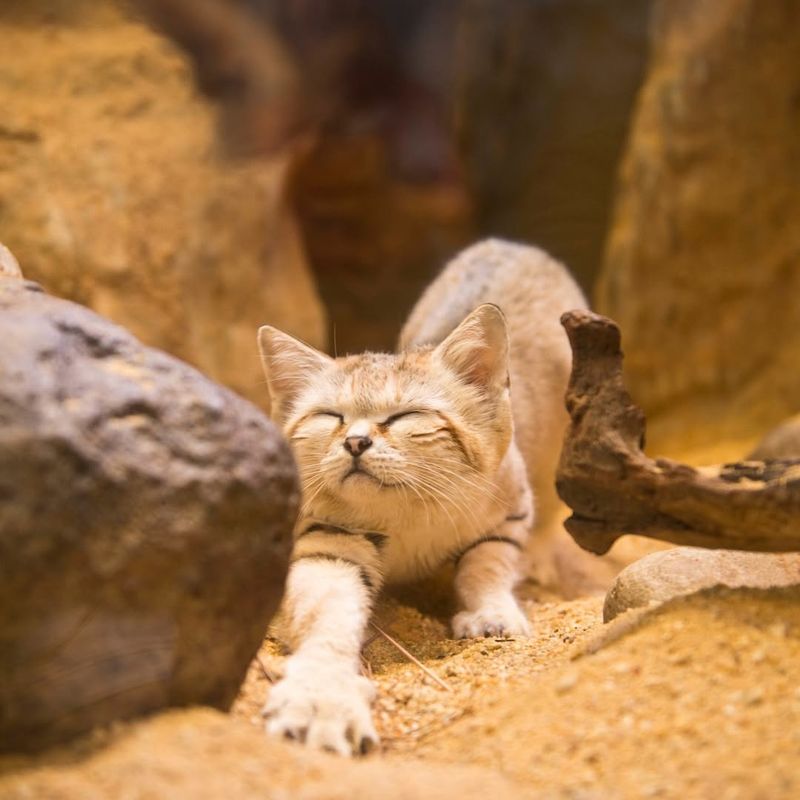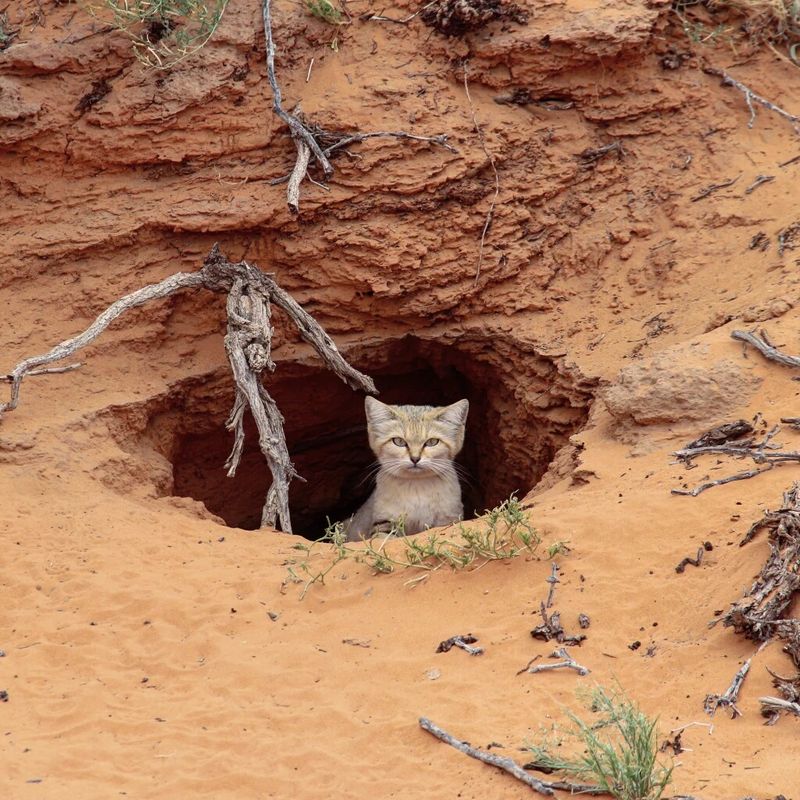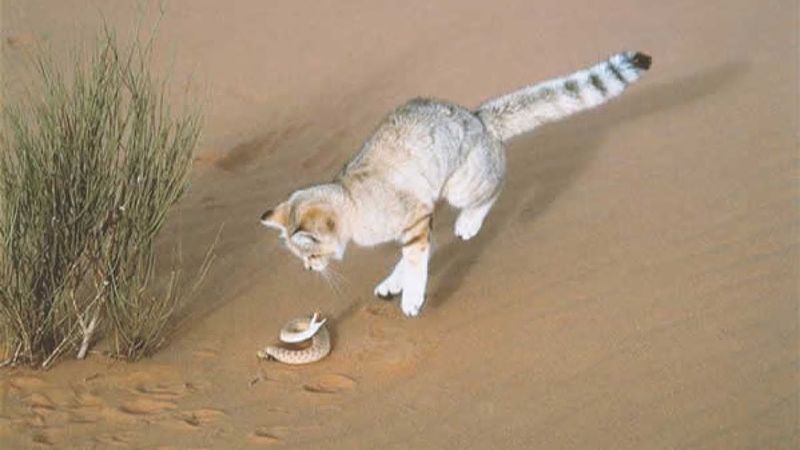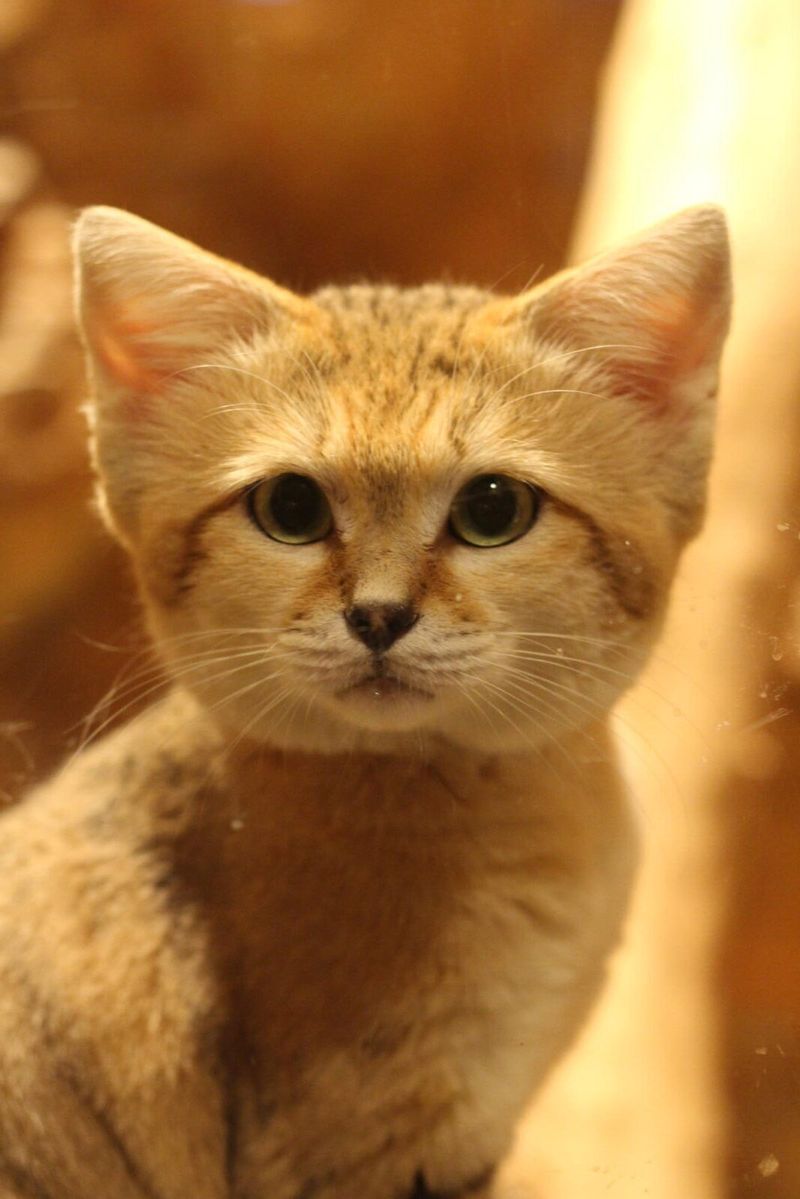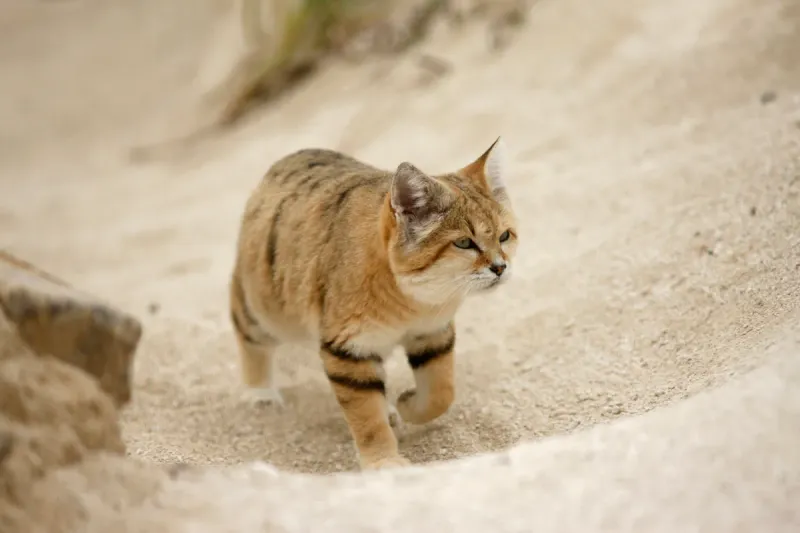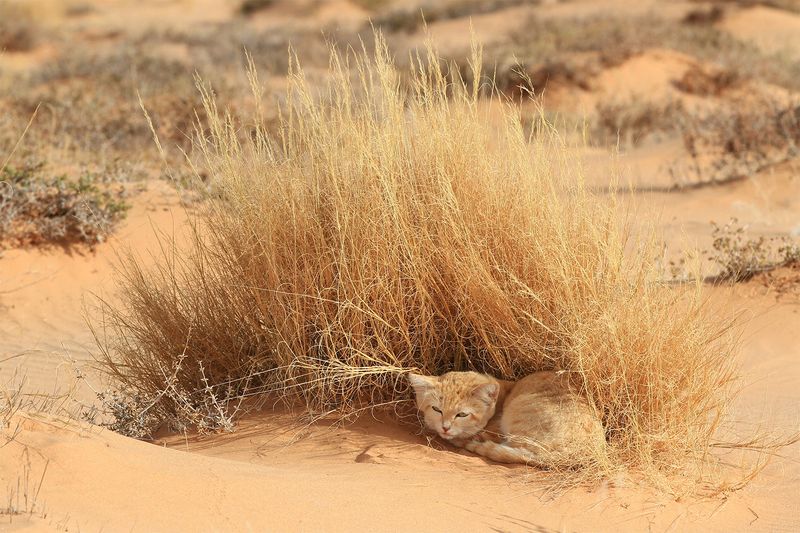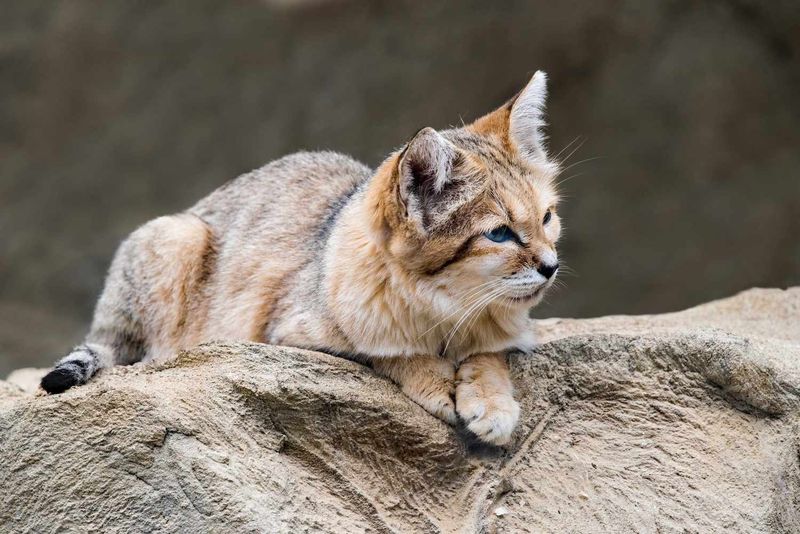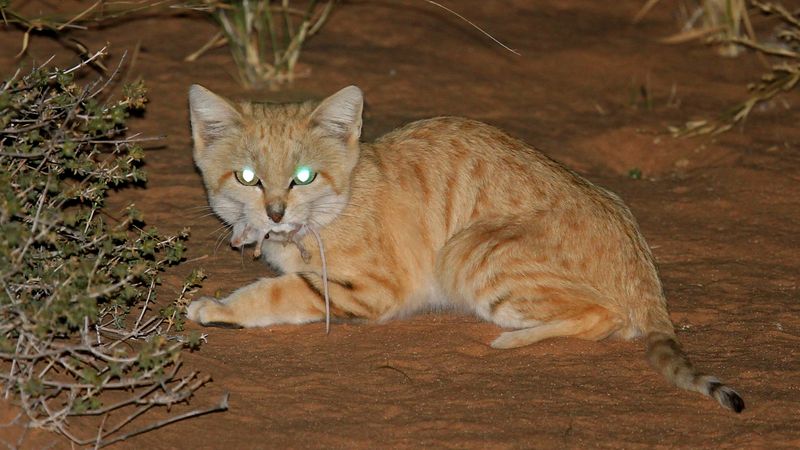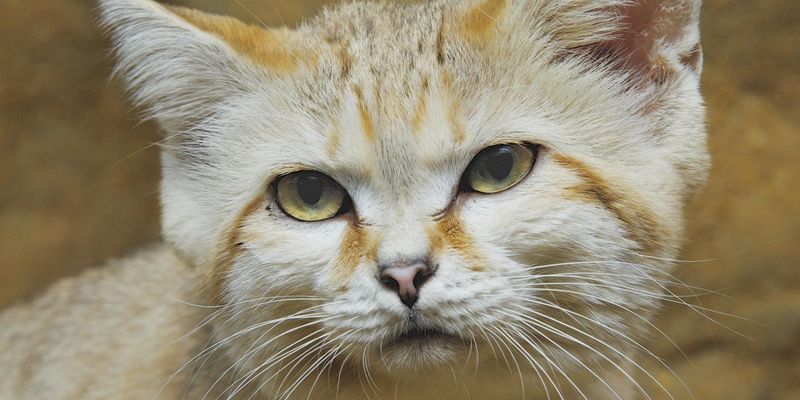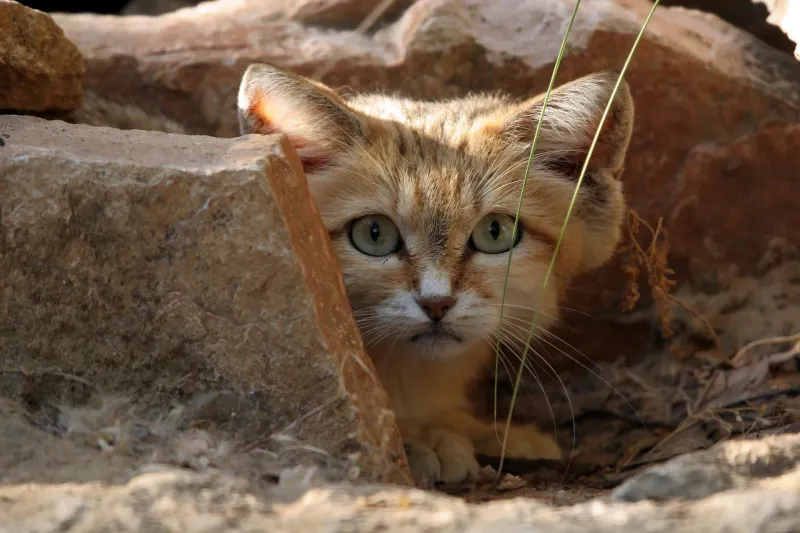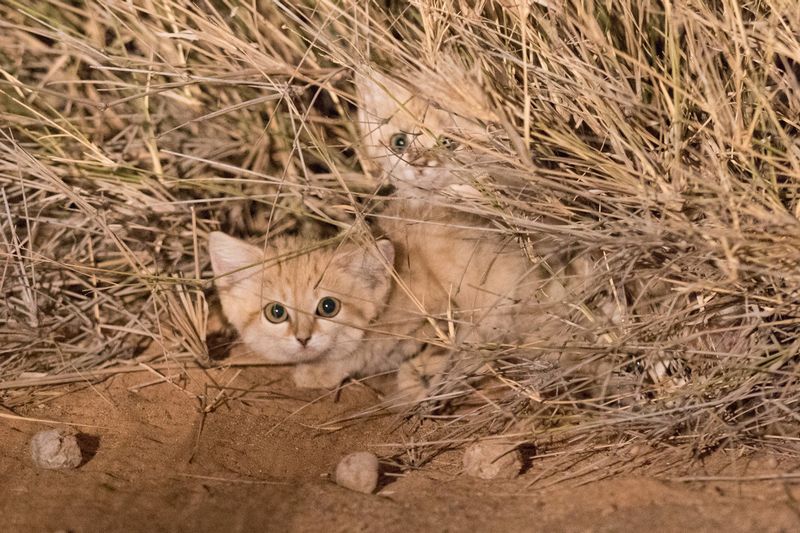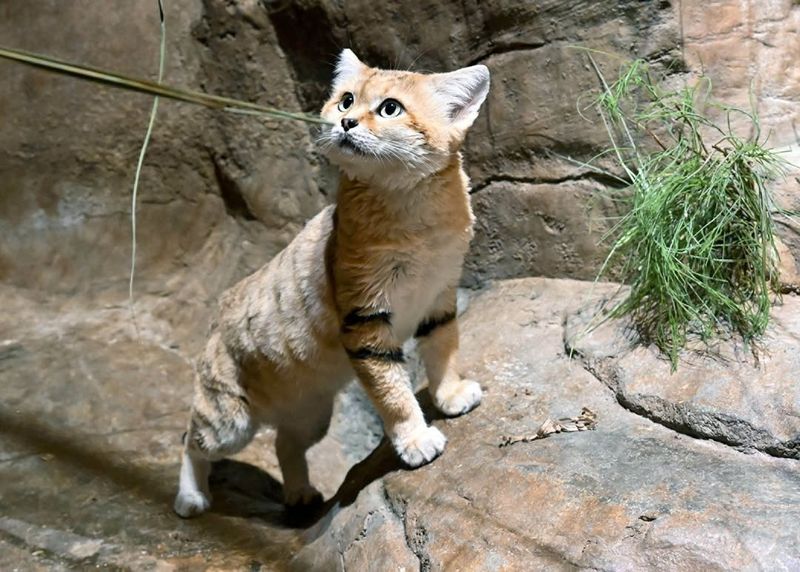📖 Table of Content:
- 1. Small but Mighty
- 2. Masters of Extreme Heat
- 3. Thick Fur for Desert Life
- 4. No Need for Water
- 5. Expert Burrowers
- 6. Silent Stalkers
- 7. Wide-Set Ears for Super Hearing
- 8. Fast and Agile Runners
- 9. Masters of Camouflage
- 10. Solitary and Secretive
- 11. Nocturnal Hunters
- 12. Distinctive Meows and Growls
- 13. Short Lifespan in the Wild
- 14. Rare and Hard to Study
- 15. Threatened by Human Activities
The sand cat is a fascinating and resilient predator that thrives in some of the harshest desert environments on Earth. Despite its small size, this feline is well-equipped to survive in extreme conditions, displaying a combination of adaptability and stealth. Its sandy-colored coat provides excellent camouflage against the desert landscape, allowing it to blend seamlessly with its surroundings. With thick fur on its paws, the sand cat can walk across hot sand without discomfort, making it perfectly suited for its arid habitat. These adaptations enable the sand cat to remain elusive, avoiding both predators and human detection.
One of the most remarkable traits of the sand cat is its ability to survive without direct water intake. Instead of drinking from water sources, it obtains the necessary hydration from the prey it consumes, such as rodents, birds, and insects. This unique adaptation allows it to thrive in regions where water is scarce and temperatures fluctuate drastically between day and night. The sand cat is also a nocturnal hunter, using its keen hearing to detect prey movements beneath the sand. With a silent and calculated approach, it swiftly ambushes its target, making it a highly effective predator in its environment.
Beyond its hunting prowess, the sand cat’s behaviors and physical features contribute to its charming yet formidable nature. It has large ears that enhance its sense of hearing, helping it locate prey and detect potential threats in the vast desert landscape. Unlike many other wild cats, the sand cat is known for its playful and kitten-like appearance, which contrasts with its fierce survival skills. However, due to habitat destruction and illegal pet trade, sand cats face increasing threats in the wild. Conservation efforts are essential to protecting these unique desert dwellers, ensuring they continue to roam the sandy landscapes they have mastered for centuries.
1. Small but Mighty
Despite their small size, sand cats are formidable predators perfectly adapted to life in the desert. Weighing between 3–7 pounds (1.4–3.2 kg), they are similar in size to a domestic cat but possess the instincts and abilities of a wild hunter. Standing 10–12 inches (25–30 cm) tall, they have a low profile that allows them to move discreetly across vast desert landscapes. Their small bodies help them conserve energy, which is essential for survival in environments where food can be scarce. Unlike many larger wild cats, their compact size allows them to squeeze into tight burrows for protection from extreme temperatures and predators. Though they may appear fragile, they are fierce hunters capable of taking down prey larger than themselves. This combination of size and strength makes the sand cat one of the most unique felines in the animal kingdom.
2. Masters of Extreme Heat
Thriving in some of the most unforgiving climates on Earth, sand cats are true desert survivors. They inhabit the Sahara, Arabian, and Central Asian deserts, where temperatures can soar above 120°F (49°C) during the day and drop below freezing at night. To withstand these extremes, they have developed remarkable adaptations that allow them to regulate their body temperature effectively. Their thick fur provides insulation against both the scorching sun and the freezing desert nights. By being primarily nocturnal, they avoid the deadly heat of the daytime and take advantage of cooler temperatures for hunting. Their ability to survive in such harsh conditions sets them apart from most other wild cats. In a land where few animals can thrive, the sand cat has proven itself to be an extraordinary survivor.
3. Thick Fur for Desert Life
Walking across the blistering desert sand would be unbearable for most animals, but the sand cat has a built-in solution. Thick fur covers the bottom of its paws, acting as natural insulation against the scorching ground. This adaptation not only prevents burns but also allows them to move effortlessly across loose sand without sinking. Additionally, their fur-covered feet enable them to walk silently, making them stealthy hunters. This silent movement is crucial when stalking prey, as it prevents rodents and insects from detecting their approach. The thick fur on their bodies also helps protect them from the cold desert nights, keeping them warm when temperatures plummet. With this special fur, sand cats can thrive in an environment where few other predators dare to roam.
4. No Need for Water
Survival in the desert requires extreme adaptations, and the sand cat has one of the most impressive. Unlike most mammals, they can survive without drinking water for months at a time. Instead, they get all the moisture they need from their prey, which includes rodents, birds, lizards, and insects. Their highly efficient kidneys allow them to extract and retain as much water as possible from the food they consume. By relying solely on their diet for hydration, they avoid the need to search for water sources, which are scarce in the desert. This adaptation helps them avoid competition with other animals that gather around oases and watering holes. Even in the driest environments, the sand cat has mastered the art of staying hydrated.
5. Expert Burrowers
Finding shelter in the desert is essential for survival, and sand cats have perfected the skill of burrowing. They often dig their own burrows or take over abandoned ones from other animals like foxes or porcupines. These underground shelters provide much-needed protection from the extreme heat during the day and the bitter cold at night. Unlike larger wild cats that rely on trees or caves, sand cats spend much of their time in these burrows to stay safe. Their burrows also help protect them from predators such as owls, jackals, and snakes. Mothers use burrows to raise their kittens, keeping them hidden from danger until they are old enough to fend for themselves. Constantly shifting between burrows, they make it difficult for predators to track them down.
6. Silent Stalkers
Hunting in the desert requires patience and precision, and sand cats excel at both. Their soft fur and padded paws allow them to move silently across the desert floor, giving them a huge advantage when sneaking up on prey. This stealth is critical because many of their prey, such as rodents and lizards, have excellent hearing and can quickly escape if they sense danger. Unlike larger cats that rely on speed or brute force, sand cats depend on their ability to remain undetected until the perfect moment to strike. Their small size allows them to maneuver easily through tight spaces, giving them access to prey hiding in burrows and crevices. Even when walking on loose sand, they leave barely any tracks behind, making them difficult for both prey and predators to detect. With their unique adaptations, sand cats have perfected the art of silent hunting in the vast desert.
7. Wide-Set Ears for Super Hearing
Detecting prey in the desert is a challenge, but sand cats have an extraordinary tool for the job: their oversized ears. Positioned wide apart on their heads, these ears act like amplifiers, picking up even the faintest sounds of movement. This allows them to detect small rodents burrowing underground or insects scuttling across the sand. By tilting their heads and rotating their ears, they can precisely locate where a sound is coming from. Unlike domestic cats, they rely on their hearing more than their eyesight, which is especially useful in total darkness. Their exceptional hearing gives them an edge over other predators that depend more on vision. Thanks to this powerful sense, sand cats can easily track down prey even when it is out of sight.
8. Fast and Agile Runners
Speed and agility are essential for survival in the desert, and sand cats are built for both. Despite their small size, they can reach speeds of up to 25 mph (40 km/h), allowing them to chase down fast-moving prey. Their lightweight bodies help them maneuver quickly across uneven terrain, whether it’s soft sand dunes or rocky outcrops. Unlike larger wild cats that rely on brute strength, sand cats use their speed to evade predators and avoid confrontations. Their quick reflexes make them excellent hunters, as they can pounce on prey with lightning-fast precision. When threatened, they can sprint short distances to escape danger before quickly disappearing into a burrow or dense vegetation. This combination of speed and agility makes them one of the most efficient predators in the desert.
9. Masters of Camouflage
Blending into the desert landscape is a crucial survival tactic, and sand cats are experts at it. Their fur is sandy-colored, matching the hues of the desert sand and helping them stay hidden from both predators and prey. During the day, they crouch low to the ground and remain still, making them nearly invisible against the shifting dunes. Their coat also changes slightly with the seasons, becoming denser and darker in the winter to provide warmth and better camouflage. Unlike many other wild cats, they do not leave obvious tracks, making it difficult for predators to follow them. This natural camouflage is one of the reasons they are so rarely seen in the wild. Even experienced researchers struggle to spot them in their natural habitat.
10. Solitary and Secretive
Living a mostly solitary life, sand cats prefer to roam the desert alone. Unlike social felines like lions, they do not form prides or groups, except during mating season. This independent nature helps them avoid competition for food and shelter in a harsh environment where resources are scarce. They mark their territory with scent markings and urine, signaling to other sand cats to stay away. Even though they are elusive, researchers have observed that they may occasionally cross paths, but interactions are usually brief. Due to their avoidance of humans and remote habitats, they are one of the least studied wild cats in the world. Their secretive behavior makes them incredibly difficult to track, adding to the mystery surrounding their existence.
11. Nocturnal Hunters
Hunting at night is the key to the sand cat’s survival in the extreme desert environment. As temperatures drop, they emerge from their burrows to search for food under the cover of darkness. Their excellent night vision allows them to detect even the slightest movements, giving them an advantage over their prey. Many of the small mammals, birds, and reptiles they hunt are also nocturnal, making nighttime the most active period for both predator and prey. During the day, they remain hidden to avoid the scorching sun and potential threats from larger predators. By being nocturnal, they minimize energy loss and maximize their hunting success. This adaptation has allowed them to thrive in one of the toughest environments on Earth.
12. Distinctive Meows and Growls
Unlike domestic cats, sand cats have a unique way of communicating. Their high-pitched meow is often compared to a bark, making them sound quite different from their feline relatives. They use this distinctive call to attract mates, especially during the breeding season when finding a partner is essential. When feeling threatened, they growl or hiss loudly to intimidate potential predators or rivals. Although they are generally quiet animals, their vocalizations can be heard over long distances in the open desert. Mother sand cats also use soft chirps to communicate with their kittens, guiding them to safety. Since they live in isolated and vast landscapes, their ability to produce distinct calls helps them locate each other when necessary. This rare and unusual vocalization is just another feature that sets them apart from other wild cats.
13. Short Lifespan in the Wild
Surviving in the desert is no easy task, and for sand cats, life in the wild is often short. On average, they live 6–8 years in the wild, facing constant threats from predators, harsh weather, and food scarcity. Birds of prey, such as large owls, pose a significant danger, especially to young kittens. Jackals, foxes, and snakes also prey on sand cats, making survival a daily challenge. In captivity, however, where food and medical care are readily available, they can live up to 13 years. Despite their ability to adapt to extreme conditions, their naturally short lifespan is a reflection of the dangers they face in their habitat. Every successful hunt, hidden burrow, and avoided predator increases their chances of survival. Yet, even with all their survival skills, the desert remains an unforgiving home.
14. Rare and Hard to Study
Very few people have seen a sand cat in the wild, making them one of the most elusive felines on the planet. Their remote desert habitat and secretive nature make them incredibly difficult to observe. For years, scientists struggled to document their behavior and population numbers. It wasn’t until 2016 that researchers managed to capture clear footage of wild sand cats after years of searching. Their natural ability to blend into the environment, their avoidance of human activity, and their preference for moving at night all contribute to their mystery. Even with modern tracking technology, little is known about their full range, breeding habits, or daily routines. Every sighting of a sand cat in the wild is a rare and valuable discovery.
15. Threatened by Human Activities
Despite their adaptations for survival, sand cats are increasingly facing threats from human activities. Although they are not currently classified as endangered, habitat destruction caused by agriculture, mining, and human settlement is reducing their hunting grounds. Climate change is also affecting desert ecosystems, making it harder for sand cats to find food. In some areas, they are captured illegally for the exotic pet trade, despite being wild animals that are difficult to care for. Human expansion into desert regions increases the risk of encounters with domestic animals, which can spread diseases to sand cats. Conservationists are working to better understand and protect these unique felines before their population declines further. Raising awareness about their existence is crucial in ensuring their survival in the wild. If proper conservation efforts are not made, the sand cat’s reign over the desert may eventually come to an end.
